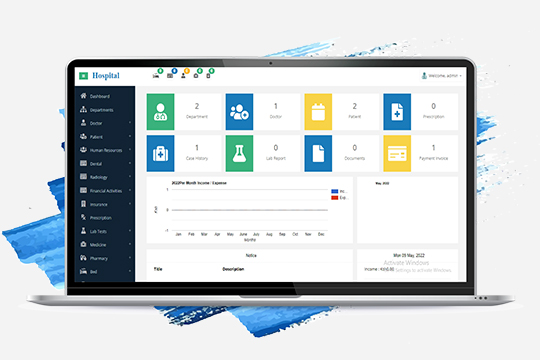How Mobile Apps Are Helping Kolkata Businesses Grow Faster
For years, a strong website was enough. Today? Your customers, your staff, and even your vendors are living their lives…
Do you want to improve your design skills and take your projects to the next level? There is no need to look any further! In this comprehensive guide, we will look at Figma, a powerful design tool that has become extremely popular among designers due to its versatility, collaboration features, and ease of use. This guide will provide you with valuable insights, tips, and tricks to help you master Figma and unlock your design potential, whether you are a beginner or an experienced designer.
If you’re new to Figma, you should start with the fundamentals. This Figma tutorial will walk you through the basics of the tool, including project creation and management, understanding the interface, working with artboards and frames, importing and exporting assets, and collaborating with team members. You’ll also discover how to use Figma’s powerful features like the design components library, design constraints, and the prototyping tool.
After you’ve mastered the fundamentals, it’s time to delve deeper into Figma’s design capabilities. This section will teach you valuable design techniques and tips to help you optimise your workflow and create visually stunning designs. To streamline your design process, you’ll learn how to use Figma’s vector editing tools, work with colour palettes, typography, and images, and create reusable design components. You’ll also learn advanced techniques like designing responsive interfaces, creating micro-interactions, and enhancing your design workflow with plugins.
Here are some essential Figma design tips and techniques to help designers optimise their workflow and create stunning designs.
Designers can optimise their design process, improve collaboration with team members, and create visually stunning and consistent designs by incorporating these tips and techniques into their Figma workflow. Figma provides a robust set of features that, when used effectively, can unlock a designer’s full potential and propel their design work to new heights.
To become a Figma master, you must follow best practises and create an efficient workflow. This section will go over the best practises for designing in Figma, such as how to organise your design files, use design systems, manage design versioning, and collaborate with team members. In addition, you’ll learn how to incorporate Figma into your design workflow, from wireframing and prototyping to user testing and design handoff. You’ll be able to work seamlessly and efficiently in Figma while producing high-quality designs if you follow these best practises and workflow recommendations.
Figma design and workflow to optimize productivity and create efficient and effective design projects.
Here are five major points to consider:
Following these Figma design and workflow best practises can greatly improve productivity, collaboration, and consistency in your design projects. You can streamline your workflow and efficiently create high-quality designs in Figma by organising your files, utilising design components, collaborating effectively, optimising vector editing, and creating design systems.
With all of the knowledge and skills you’ll gain from this comprehensive guide, you’ll be well on your way to mastering Figma and realising your full design potential. You’ll be able to create visually stunning and highly functional designs that captivate your audience by leveraging Figma’s powerful design capabilities, following best practises and workflow recommendations, and employing design hacks and secrets.
Ndimension Labs is a design and technology firm that uses Figma extensively in their design process. Figma is a cloud-based design tool that enables teams to work together in real-time to create user interfaces (UI) and user experiences (UX) for a variety of platforms, including web, mobile, and desktop applications.
The skilled designers and developers at Ndimension Labs use Figma to create visually appealing and interactive designs for their clients. Figma gives them a wide range of design capabilities, such as vector editing, prototyping, design components, and design systems, allowing them to streamline their design workflow and create consistent and efficient designs.
Ndimension Labs uses Figma’s real-time collaboration features to collaborate with their team members and clients in real time. They can share design files, solicit feedback, and iterate on designs in real time, resulting in more efficient communication and faster design iterations.
Ndimension Labs can use Figma’s design components feature to create reusable design elements like buttons, icons, and forms that can be updated once and reflected across all instances. This allows them to maintain consistency across their design projects and saves time when making design changes.
Ndimension Labs also makes use of Figma’s prototyping tools to create interactive prototypes for user testing and feedback. They can create interactive links between screens, simulate user interactions, and collect feedback from clients and users to improve the overall user experience.
Ndimension Labs also makes use of Figma’s design systems to define and maintain design guidelines such as colour palettes, typography styles, spacing, and other design elements. This allows them to ensure consistency in their designs while also making it simple to update and maintain design elements across multiple projects.
In conclusion, Ndimension Labs uses Figma as a powerful design tool to help their team collaborate efficiently, create reusable design components, prototype interactive designs, and maintain consistency through design systems. Figma is critical to their design process, assisting them in developing visually appealing and user-friendly designs for their clients’ web and mobile applications.

For years, a strong website was enough. Today? Your customers, your staff, and even your vendors are living their lives…

Building a High-Performing Hotel Booking Mobile App The days of relying solely on front-desk calls or travel agents for bookings…

The Rise of Digital Healthcare: Transforming the Patient Journey The relationship between patients and healthcare providers is undergoing a rapid,…